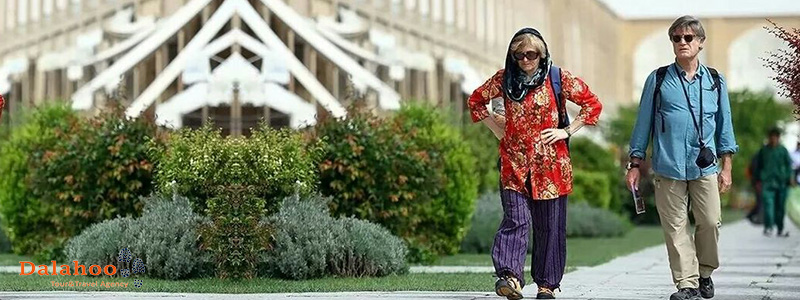


If you are planning a trip to Iran, so you probably have had some research about Iranian history. Nowadays most of people around the world know about Islamic revolution in 1979 in Iran. One of the new rules was: Hijab (Hejab in Farsi). According to Islamic law women must cover their hair and body. This form of dressing requires some especial clothes like manto, scarf, Chador and other stuff for women that you are getting familiar with them. But what about men? How are men supposed to wear?
Coming from a non-Islamic country can be daunting but there is nothing complicated about what we are to say about dressing codes in Iran. Dress code in Iran is an important part of its norms.

As a man who travels, everything will be easier than a female traveler. You can dress however you want except wearing shorts in public. They are not acceptable in public places. But in beaches you can wear it. We made a list for you to understand better, here main Do’s and Don’ts items for you:
1- As we said before wearing shorts are not acceptable in public places.
2- Wearing ties or bows is not a problem. But ties are worn in especial occasions like wedding party and other situation that need formal attire.
3- T-shirts are acceptable. Almost every clothes for men can be dressed.
4- Short sleeves are acceptable when sightseeing and shopping but not for formal or business occasions.
5- All the leisure wear is acceptable, although be aware that tracksuit bottoms are only used indoors or in gyms.
Note: If you think Iranian men don’t wear fashion clothes or they don’t know what is going on in the fashion world So it’s time to reconsider your thoughts. In all cities you can see men who follow the latest mode and design norms. Although in big cities like Tehran, Shiraz, Tabriz or Isfahan the young are following fashion news but in religious ones like Qom and Mashhad people wear more conservative clothes.
If you are a female traveler, you should notice some notes. Maybe at first glance you get confused but we assure you there is nothing to worry about.
Obeying Islamic rules including Hijab or Islamic dress-code is necessary in Iran. However these rules are not observed very strict, especially for tourists and foreigners.
The best practical tips for foreign women dress-code in public places:
The first dress code that a female tourist needs as other women in Iran is Hijab. You should wear hijab everywhere: on public places, in hotels, cafés. This rule will be start at the moment you arrive in Imam Khomeini Airport. ‘But what is Hijab?” well, actually it’s a combination of scarf (shawl) , Maqna’e (a nun-like head scarf of wimple) and Roosari in Farsi that cover your head and hair and a Manto to cover your body. In next part you’ll find out what is scarf and how to find it.
“How am I supposed to wear these and keep them on my head?”. It’s simple and easy to learn. Although the biggest challenge that you will encounter is keeping your scarf on. But we give you the tricks: Buy textured cotton and non-slippery scarves (silk scarves) or use a shawl pins. We will assure you that you get used to it. But if you like a silk scarf and wear it so it’s better to tie it under your chin like babushka-style.
Note: if you are willing to visit important holy shrines in cities like Mashhad or Qom you must wear Chador. A black or colorful garment that covers all your body from head to toe. These type of dress can be borrowed onsite. Taking photos with chador is one of the favorite parts of visiting Iran for foreigners.
Now it’s turn to say about wearing Manto. A long coat-like usually up to knee-high with buttons and it’s very popular in Iranian women. You can buy it everywhere. Remember that your Manto will need to stay on in restaurants, cinemas, shops and other interior public spaces. Except Manteau, you can wear loose-fitting cardigans up to your mid-thigh.
1- you better enter Iran with a coat and a scarf and select your style by watching the Iranian women in the streets.
2- Legs should be covered down to ankles. Feet can be bare and you can wear sandals. Tight jeans are no problem.
3- It is very usual that some parts of your hair remain out of the cover.
Generally there is no limitation on color. It's a completely false belief that wearing must be dark in Iran but be aware of some occasions like month of Moharram (when Iranians observe mourning for Imam Hossein, and during the fast of the month of Ramadan.). In these months it’s better not to wear reds or pinks.
Last words:
1- In summer, wear loose-fitting and thin clothes. Don’t forget to wear cap or sun hat. There is no difference for women and men about this trick.
2- Covering ears and throat is a should. In Tehran, Isfahan or Shiraz it won’t be a problem if you do not. But in Qom do it.
3- However, don’t forget that Iranians are well disposed toward foreigners and generally appreciate an effort to fit in and show respect for their efforts.